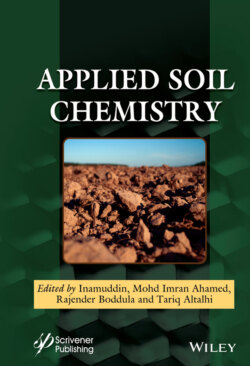Читать книгу Applied Soil Chemistry - Группа авторов - Страница 23
1.2.4 Tilled and Ploughed Agricultural Land
ОглавлениеWhereas tilling prepares land for cultivation by mixing particles as a till is dragged through a soil ploughing tends to fragment clumps of soil and bury weeds and crop residues by penetrating deeper into the soil layers. Both activities are generally referred to as tillage. These activities typically result in higher carbon losses from cultivated soils than undisturbed grassland or forest soils, which typically possess the lower levels of carbon in their undisturbed condition. Deforestation of land to create new land for cultivation often leads to their soils being rapidly degraded in carbon and certain mineral components by groundwater leaching and enhanced microbial metabolism that increases the rate of soil respiration. Increased soil oxygen levels and changes in their temperature and humidity by tillage disruption are typically the causes of enhanced carbon losses from soils, both in the form of CO2 to the atmosphere and as leached organic compounds deeper into the subsurface [32]. Replacing ploughing with less disruptive tilling using shallow-tine equipment can reduce carbon losses from a soil substantially. Whereas ploughing can result in greater than 25% carbon loss, replacing it with shallow tilling can result in just 5% or 6% carbon loss [33]. Soil carbon content can be reduced rapidly the introduction of arable cultivation techniques involving some level of tillage. Buhre et al. (2005) [34] recorded carbon losses of up to 11% from soils subjected to just one cultivation cycle.
